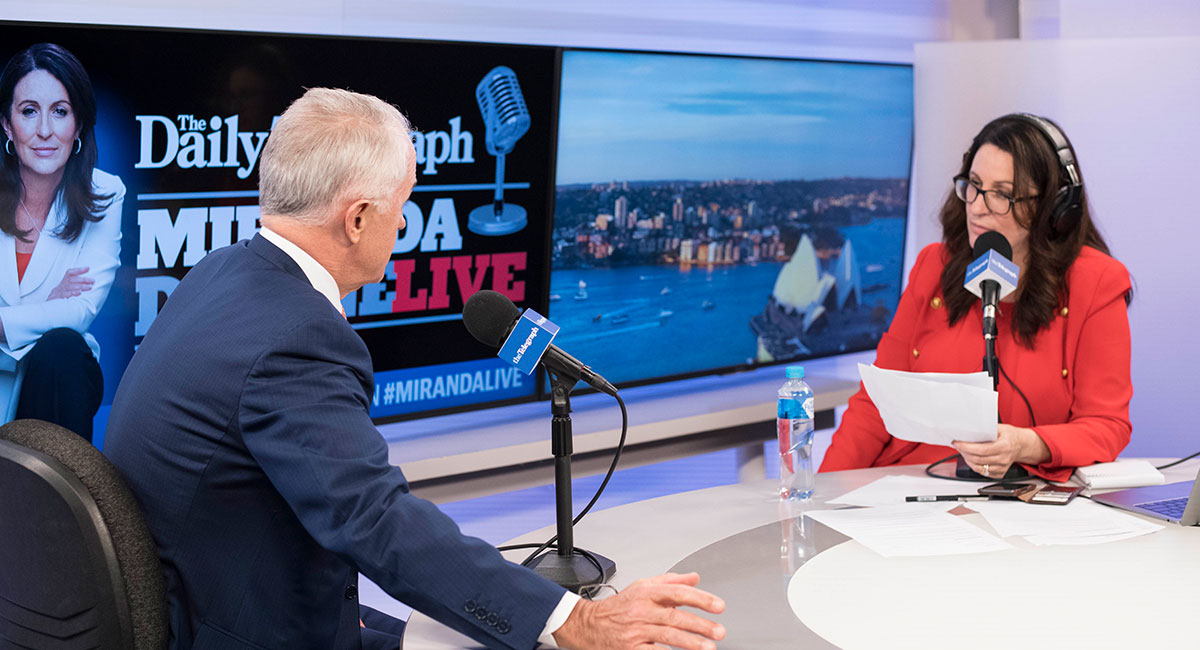News Corp’s internet radio show, Miranda Live, is the first of many to come.
The company’s head of print innovation, Zac Skulander, was one of the two people behind its ideation and launch five months ago. The other person was The Daily Telegraph editor Christopher Dore.
• Mathematics to journalism: Inside Miranda Devine’s new radio show
“What we’ve created is the world’s most measurable radio station,” Skulander told Mediaweek. “I don’t have people that are filling out paper diaries and then getting a ‘guestimation’ of what the size of the audience is. I know precisely how many people are listening, when they are listening, how long they are listening for and where they are.”
The idea of creating an internet radio show came from the want to utilise News Corp’s editorial resources better, as well as create a new avenue for advertisers.
“Newspapers set the agenda. It’s one of those things that we often say in the market. To be honest, it wasn’t until I started working in other media that I realised the important role newspapers play in the content that other media companies report on,” Skulander said.

Miranda Devine recording Miranda Live with PM Malcolm Turnbull
“I worked in radio for a few years. You’d think that stations and the big personalities that are on it have enormous teams around them and would have people who go out to find news for them to report on but that’s not the reality. When you get in there you realise that there are only one or two people that are working on these massive shows. For breakfast, they get in early in the morning and go through newspapers from front to back to identify key stories that will lead the conversations in Australia that day. They then report on those stories.”
Miranda Live is an example of how News Corp can utilise its team of reporters to discuss the stories that are making the headlines on any given day.
Skulander said: “Just because Miranda [Devine] is the host doesn’t mean it’s only about her own columns. The majority of the content is driven by what our journos have reported on and what’s going to be in the paper the next day.”
“It is flattering when our stories get picked up by other media outlets but, with a show like Miranda Live, we can get those journalists who chased the stories to come on and discuss how they got that story. We have journalists who are chasing some stories for three or six months. Why wouldn’t you want to hear from the person who chased the story, broke it and wrote it over someone who is reading it secondhand?
“We want to tell the story behind the stories.”
Miranda Live is the first of many internet radio shows to come. “We are just getting started,” Skulander said.
News Corp uses Sky News Business’s old studio facility on level three of its offices in Sydney to produce Miranda Live, which airs at 4pm Monday-Wednesday.
“We are looking at expanding our audio offering. We just need to work out where we would go with it,” Skulander said. “The opportunities with internet radio are limitless for us. We have fantastic websites, which have large audiences coming to them every single day. But it’s about working out who we should put on air and what the show should sound like.”
Skulander is contemplating putting together a live show in mornings. “There is a real gap in the market for a hybrid show. For example, a radio show in the mornings, followed by a 25-minute-long highlights podcast,” he said.
What’s the biggest challenge of commercialising an internet radio show?
“Miranda Live has only been on-air for five months,” Skulander said.
“Spending enough time in the market and telling people about it is the biggest challenge.”
At News Corp’s recent Come Together events in Sydney and Melbourne, attendees were shown a glimpse of what newspapers could become in the future.
The media giant is working on integrating augmented reality into print media. For example, when a reader scans the front page of a newspaper using a mobile device, its editor would pop up as hologram on the screen to talk about the front page story of the day and why it’s important.
Skulander said: “My dream is to have a newspaper like the one in Harry Potter that updates in front of your eyes. We are not there yet, but we will get there.”
